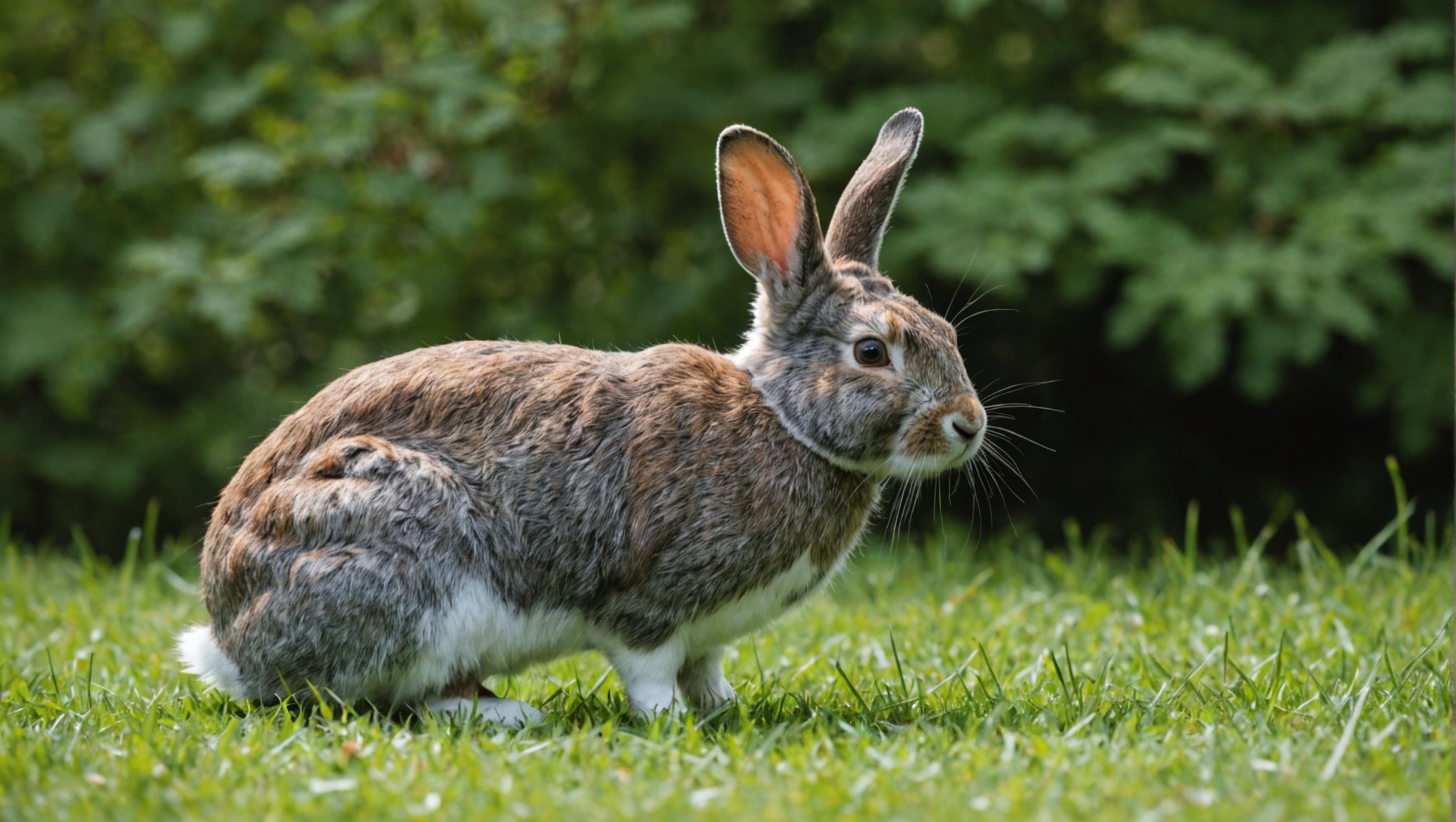Flystrike poses a significant risk to outdoor rabbits, especially in humid weather when flies are most active. Identifying the early signs of this distressing condition can mean the difference between life and death for your furry friends. This guide offers practical strategies to spot potential issues and implement preventive measures, ensuring a healthier and safer environment for your rabbits. Equip yourself with the knowledge needed to protect your pets and enjoy peace of mind during those sticky summer months.
Understanding Flystrike in Rabbits
Flystrike, a distressing condition for rabbits, is caused by flies laying eggs on the animal, which hatch into maggots. These maggots can cause severe skin damage, leading to serious health issues. Timely intervention is crucial to prevent this condition from escalating.
A lire également : Crafting the Perfect Balanced Diet for Senior Cats with Kidney Concerns: A Comprehensive Guide
In humid weather, rabbits are more susceptible to flystrike. The moisture creates an ideal environment for flies to thrive, increasing the risk of infestation. This is why flystrike prevention becomes critical during such times. Ensuring your rabbit's living area is clean and dry can significantly reduce the risk.
Key Prevention Tips
- Regular grooming: Helps keep your rabbit clean and less attractive to flies.
- Daily checks: Inspect your rabbit for any signs of flystrike, especially in warmer months.
- Proper diet: A balanced diet aids in maintaining a healthy digestive system, reducing the risk of diarrhea, which attracts flies.
Understanding these factors is essential for rabbit care and maintaining rabbit health. By being vigilant and proactive, you can protect your furry friend from the dangers of flystrike. Remember, the well-being of your rabbit largely depends on your awareness and actions.
Dans le meme genre : Crafting the Perfect Diet for Your Special Needs Pet Bird: A Guide to Balanced Nutrition
Identifying Signs of Flystrike
Recognizing symptoms early is crucial for effective intervention.
Common Signs and Symptoms
Flystrike can manifest through various symptoms that require immediate attention. Look for visible maggots on your rabbit's skin, as they are a direct indicator. Another sign is moist and inflamed skin, often accompanied by a foul odor. If your rabbit is excessively grooming or biting at a particular area, it might be trying to alleviate discomfort caused by flystrike.
Behavioral Changes to Watch For
Rabbits suffering from flystrike often exhibit noticeable behavioral changes. They may become lethargic or show a sudden loss of appetite. Keep an eye out for unusual hiding or reluctance to move, which can indicate discomfort. A normally active rabbit that suddenly becomes withdrawn may be experiencing distress due to flystrike.
How to Perform Regular Health Checks
Regular health monitoring is essential. To perform an effective check, gently inspect your rabbit's fur and skin, especially around the hindquarters. Use a soft brush to part the fur and look for any signs of irritation or maggots.
Checklist for Health Monitoring:
- Inspect skin for redness or moisture
- Look for maggots or larvae
- Observe changes in eating habits
- Note any behavioral shifts
Being proactive in identifying these signs can make a significant difference in your rabbit's health and well-being.
Prevention Strategies for Humid Conditions
Implementing effective strategies can safeguard your rabbit from flystrike.
Maintaining Proper Hygiene in Rabbit Living Areas
Ensuring rabbit hygiene is paramount in preventing flystrike. Regularly clean and disinfect your rabbit's living space to deter flies. Remove any soiled bedding promptly, and replace it with fresh, dry materials. This practice minimizes moisture, a key factor in flystrike prevention.
Recommendations for Keeping Rabbits Cool and Dry
In humid conditions, keeping your rabbit cool and dry is crucial. Position their hutch in a shaded area and ensure adequate ventilation. Use cooling mats or frozen water bottles to help regulate temperature. These measures not only enhance comfort but also contribute to effective flystrike prevention methods.
Use of Preventative Products and Treatments
Consider using specialized preventative products designed for flystrike. Products such as fly repellent sprays or protective ointments can be applied to vulnerable areas. Consult your veterinarian for recommendations on safe and effective treatments. These products act as an additional barrier, enhancing your rabbit's protection.
Checklist for Prevention:
- Regular cleaning of living areas
- Adequate ventilation and cooling
- Application of preventative products
By integrating these strategies, you can significantly reduce the risk of flystrike, ensuring your rabbit remains healthy and comfortable.
Emergency Response to Flystrike
Swift action is crucial when flystrike is suspected.
Steps to Take if Flystrike is Suspected
When you suspect flystrike, immediate action is vital. First, isolate the rabbit in a clean, dry area to prevent further infestation. Carefully trim fur around the affected area to better assess the situation. Use a gentle antiseptic to clean the wound, but avoid harsh chemicals that could irritate the skin.
When to Seek Veterinary Care
If you notice severe symptoms such as numerous maggots, deep skin lesions, or your rabbit is in distress, seek veterinary assistance immediately. Professional intervention is often necessary for advanced cases. A vet can provide specialized emergency care and treatments that are beyond at-home capabilities.
First Aid Measures for Affected Rabbits
First aid is essential while awaiting veterinary assistance. Use a sterile saline solution to rinse the affected area, which helps remove debris and reduces infection risk. Keep your rabbit warm and ensure it is hydrated.
Emergency Care Checklist:
- Isolate and clean the rabbit
- Trim fur around the affected area
- Use antiseptic or saline solution
- Monitor for signs of distress
By following these rabbit first aid measures, you can stabilize your rabbit's condition until professional help is available.
Resources and Further Reading
Delve deeper into rabbit care and flystrike prevention with these resources.
Recommended Books and Articles
For comprehensive insights into rabbit care, consider these recommended books and articles. "The Rabbit Handbook" by Karen Gendron offers detailed guidance on maintaining your rabbit's health. Another valuable resource is "Rabbit Health in the 21st Century" by Kathy Smith, which covers various health challenges, including flystrike prevention.
Online Veterinary Advice and Forums
Online veterinary advice can be invaluable for rabbit owners. Websites like Rabbit Welfare Association & Fund provide expert insights into flystrike prevention and general care. Engaging in forums such as RabbitsOnline allows you to connect with a community of rabbit enthusiasts who share experiences and advice.
Community Resources for Rabbit Owners
Local community resources can be a great support. Many areas have rabbit-specific rescues or clubs that offer workshops on rabbit care. These groups often organize events where you can learn about flystrike prevention and other essential care topics.
Checklist for Further Reading:
- "The Rabbit Handbook" by Karen Gendron
- Rabbit Welfare Association & Fund website
- Local rabbit clubs and workshops
By exploring these rabbit care resources, you can enhance your knowledge and ensure your rabbit's well-being.











